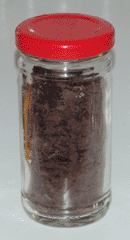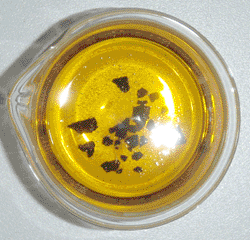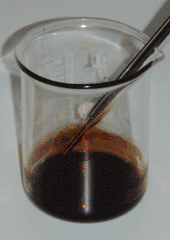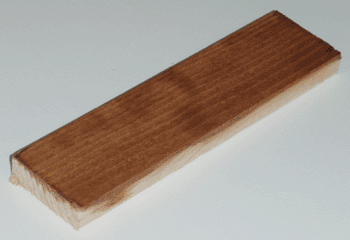



Although the previous method for making boiled linseed oil worked well, I decided to attempt to produce it without the addition of pine rosin. To begin, I first made a large quantity of ferric acetate by filtering multiple batches of wood stain into a large glass tray, then letting it oxidize and evaporate over the course of several days. Once it had dried completely, I harvested it in the form of thin reddish-brown flakes, which can be seen at the top left of the page. I then added 100mg of those flakes to 10mL of raw linseed oil, and heated the mixture to 120°C for two hours with occasional stirring. This only partially dissolved the ferric acetate, so I increased the temperature to 240°C for an additional hour, after which nearly all of the acetate had dissolved, turning the oil a dark red-brown. I then painted a small amount onto a piece of fir, wiped the excess off after an hour, and left it to dry overnight. The next day (12 hours later), it was dry to the touch.
The oil produced this way is much darker and has much less sediment than the previous oil. This is likely due to the higher-quality ferric acetate used, which is a more efficient source of iron by weight. It also has almost no gloss, with the oil conforming to the wood grain rather than covering it as before. This is probably due to the lack of rosin, which acts as a thickening agent. In general, this is an improvement over the previous oil, but steps can still be taken to shorten and simplify the process.